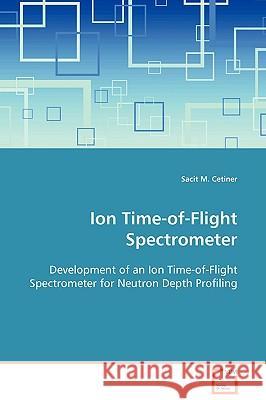Ion Time-of-Flight Spectrometer » książka
Ion Time-of-Flight Spectrometer
ISBN-13: 9783639099805 / Angielski / Miękka / 2008 / 216 str.
Ion time-of-flight spectrometry techniques are investigated for potential application to neutron depth profiling. Time-of-flight techniques are used extensively in a wide range of scientific and technological applications including energy and mass spectroscopy. Ion time-of-flight spectrometry offers highly precise measurement capabilities, particularly for slow particles. Time-of-flight spectrometry involves correlated detection of two signals by a coincidence unit. In ion time-of-flight spectroscopy, the ion generates the primary input signal. The secondary signal can be obtained by a number of ways. In this work, the secondary signal is created by the passage of the primary ion through a thin carbon foil. Two ion time-of-flight spectrometer design paradigms are introduced: the parallel electric and magnetic (PEM) field spectrometer and the cross electric and magnetic (CEM) field spectrometer."
Ion time-of-flight spectrometry techniques are investigated for potential application to neutron depth profiling. Time-of-flight techniques are used extensively in a wide range of scientific and technological applications including energy and mass spectroscopy. Ion time-of-flight spectrometry offers highly precise measurement capabilities, particularly for slow particles. Time-of-flight spectrometry involves correlated detection of two signals by a coincidence unit. In ion time-of-flight spectroscopy, the ion generates the primary input signal. The secondary signal can be obtained by a number of ways. In this work, the secondary signal is created by the passage of the primary ion through a thin carbon foil. Two ion time-of-flight spectrometer design paradigms are introduced: the parallel electric and magnetic (PEM) field spectrometer and the cross electric and magnetic (CEM) field spectrometer.











